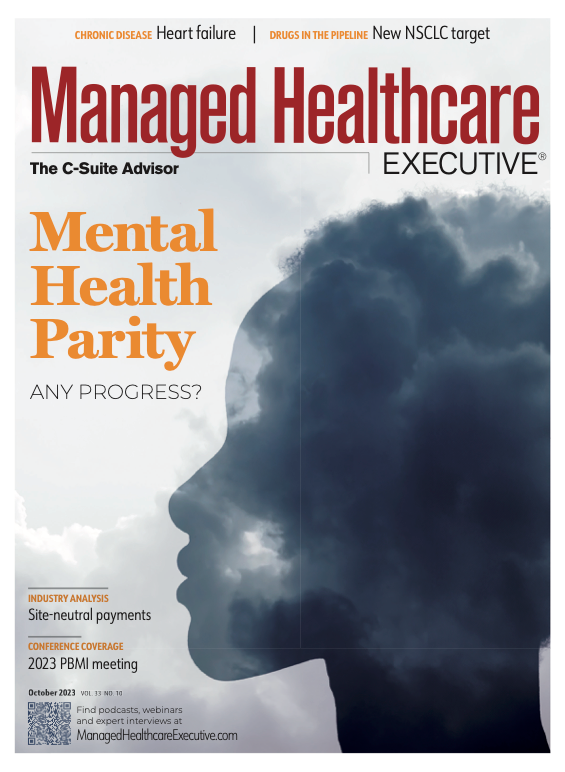- Drug Coverage
- Hypertrophic Cardiomyopathy (HCM)
- Vaccines: 2023 Year in Review
- Eyecare
- Urothelial Carcinoma
- Women's Health
- Hemophilia
- Heart Failure
- Vaccines
- Neonatal Care
- NSCLC
- Type II Inflammation
- Substance Use Disorder
- Gene Therapy
- Lung Cancer
- Spinal Muscular Atrophy
- HIV
- Post-Acute Care
- Liver Disease
- Pulmonary Arterial Hypertension
- Safety & Recalls
- Biologics
- Asthma
- Atrial Fibrillation
- Type I Diabetes
- RSV
- COVID-19
- Cardiovascular Diseases
- Breast Cancer
- Prescription Digital Therapeutics
- Reproductive Health
- The Improving Patient Access Podcast
- Blood Cancer
- Ulcerative Colitis
- Respiratory Conditions
- Multiple Sclerosis
- Digital Health
- Population Health
- Sleep Disorders
- Biosimilars
- Plaque Psoriasis
- Leukemia and Lymphoma
- Oncology
- Pediatrics
- Urology
- Obstetrics-Gynecology & Women's Health
- Opioids
- Solid Tumors
- Autoimmune Diseases
- Dermatology
- Diabetes
- Mental Health
Enforcing Mental Health Parity
The Biden administration has proposed tightening up enforcement of the federal laws that govern requiring mental health parity, a group of statutes that include the watershed Paul Wellstone and Pete Domenici Mental Health Parity and Addiction Equity Act of 2008 and the Consolidated Appropriations Act of 2021, which requires health plans to perform analyses that compare “nonquantitative treatment limits” (NQTLs) on mental and behavioral health benefits with those for medical and surgical services.
NQTLs include rules governing prior authorization, provider reimbursement rates and provider networks. Under the mental health parity laws, the NQTLs for mental and behavioral services are supposed to be no more restrictive than they are medical and surgical services.
If the administration’s new rules are finalized, they would require health plans to supply more detail in their NQTL comparative analyses. The analyses would have to include, for example, new information comparing claims denials for mental and behavioral health services to denials for medical and surgical services.
Health plans might also be facing new requirements to provide data that will allow regulators to compare their networks of mental and behavioral health providers to their networks of medical and surgical providers. One of the main gaps in mental health parity with respect to health insurance has been the shortage of in-network providers.
A July 2023 enforcement report listed several examples of NQTL shortcomings flagged by federal regulators:
Excluding coverage of residential treatment for mental health and substance use disorders when residential treatment for medical and surgical treatment was covered
Using employee assistance programs (EAPs) as gatekeepers to services for mental health and substance use disorder services when plan members didn’t have go through an EAP to use medical or surgical benefits
Excluding methadone as a treatment for opioid use disorder but covering it for medical and surgical conditions
Not covering inpatient substance use disorder treatment unless the member completes the entire course of treatment when no such requirement exists for medical or surgical treatment.
DC Roundtable: Patrick Cooney of The Federal Group Drops the Latest on PBM Legislation in Washington
April 11th 2024In this episode of "DC Roundtable," Peter Wehrwein, managing editor of Managed Healthcare Executive, spoke with Patrick Cooney, president of The Federal Group, a lobbying and strategic planning firm in Washington, D.C., about recent developments in Washington concerning PBMs.
Listen

